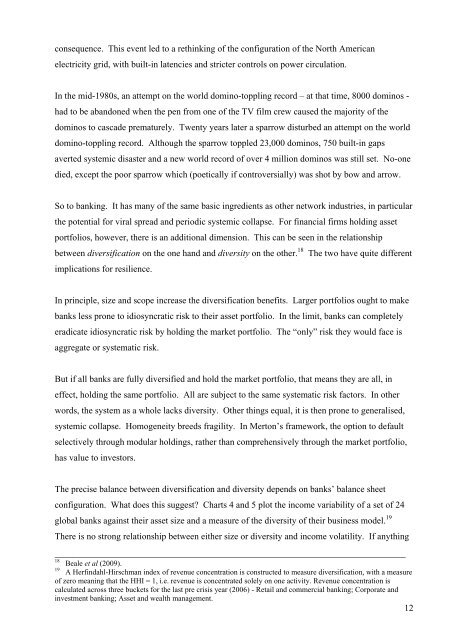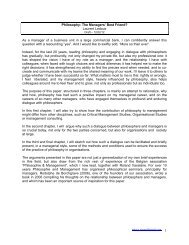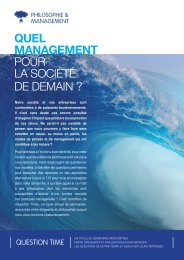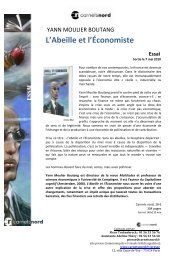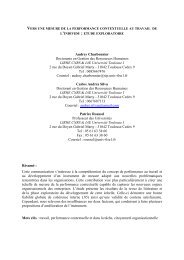The $100 billion question - Signal Lake Venture Fund
The $100 billion question - Signal Lake Venture Fund
The $100 billion question - Signal Lake Venture Fund
Create successful ePaper yourself
Turn your PDF publications into a flip-book with our unique Google optimized e-Paper software.
consequence. This event led to a rethinking of the configuration of the North American<br />
electricity grid, with built-in latencies and stricter controls on power circulation.<br />
In the mid-1980s, an attempt on the world domino-toppling record – at that time, 8000 dominos -<br />
had to be abandoned when the pen from one of the TV film crew caused the majority of the<br />
dominos to cascade prematurely. Twenty years later a sparrow disturbed an attempt on the world<br />
domino-toppling record. Although the sparrow toppled 23,000 dominos, 750 built-in gaps<br />
averted systemic disaster and a new world record of over 4 million dominos was still set. No-one<br />
died, except the poor sparrow which (poetically if controversially) was shot by bow and arrow.<br />
So to banking. It has many of the same basic ingredients as other network industries, in particular<br />
the potential for viral spread and periodic systemic collapse. For financial firms holding asset<br />
portfolios, however, there is an additional dimension. This can be seen in the relationship<br />
between diversification on the one hand and diversity on the other. 18 <strong>The</strong> two have quite different<br />
implications for resilience.<br />
In principle, size and scope increase the diversification benefits. Larger portfolios ought to make<br />
banks less prone to idiosyncratic risk to their asset portfolio. In the limit, banks can completely<br />
eradicate idiosyncratic risk by holding the market portfolio. <strong>The</strong> “only” risk they would face is<br />
aggregate or systematic risk.<br />
But if all banks are fully diversified and hold the market portfolio, that means they are all, in<br />
effect, holding the same portfolio. All are subject to the same systematic risk factors. In other<br />
words, the system as a whole lacks diversity. Other things equal, it is then prone to generalised,<br />
systemic collapse. Homogeneity breeds fragility. In Merton’s framework, the option to default<br />
selectively through modular holdings, rather than comprehensively through the market portfolio,<br />
has value to investors.<br />
<strong>The</strong> precise balance between diversification and diversity depends on banks’ balance sheet<br />
configuration. What does this suggest? Charts 4 and 5 plot the income variability of a set of 24<br />
global banks against their asset size and a measure of the diversity of their business model. 19<br />
<strong>The</strong>re is no strong relationship between either size or diversity and income volatility. If anything<br />
_____________________________________________________________________________<br />
18<br />
Beale et al (2009).<br />
19<br />
A Herfindahl-Hirschman index of revenue concentration is constructed to measure diversification, with a measure<br />
of zero meaning that the HHI = 1, i.e. revenue is concentrated solely on one activity. Revenue concentration is<br />
calculated across three buckets for the last pre crisis year (2006) - Retail and commercial banking; Corporate and<br />
investment banking; Asset and wealth management.<br />
12


